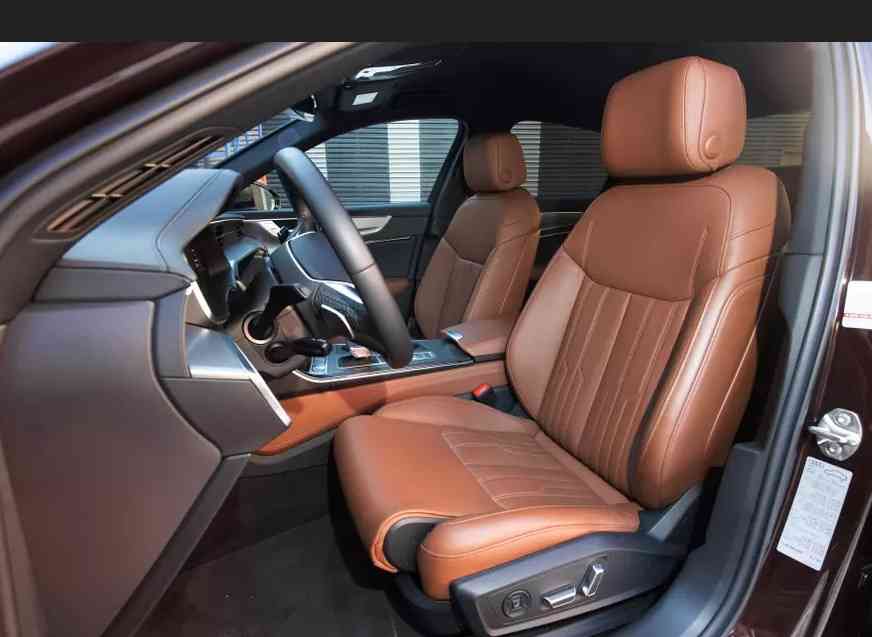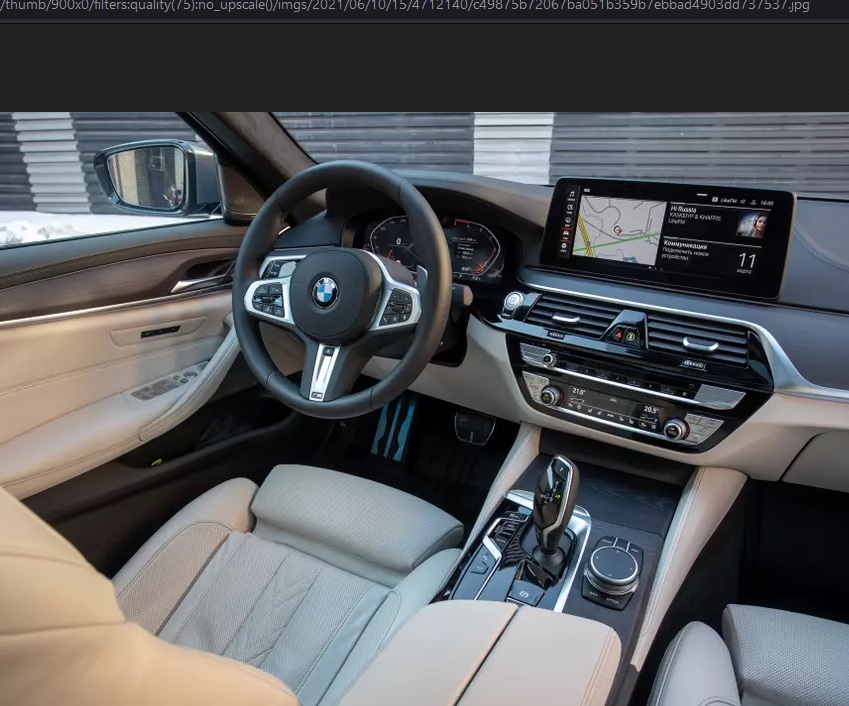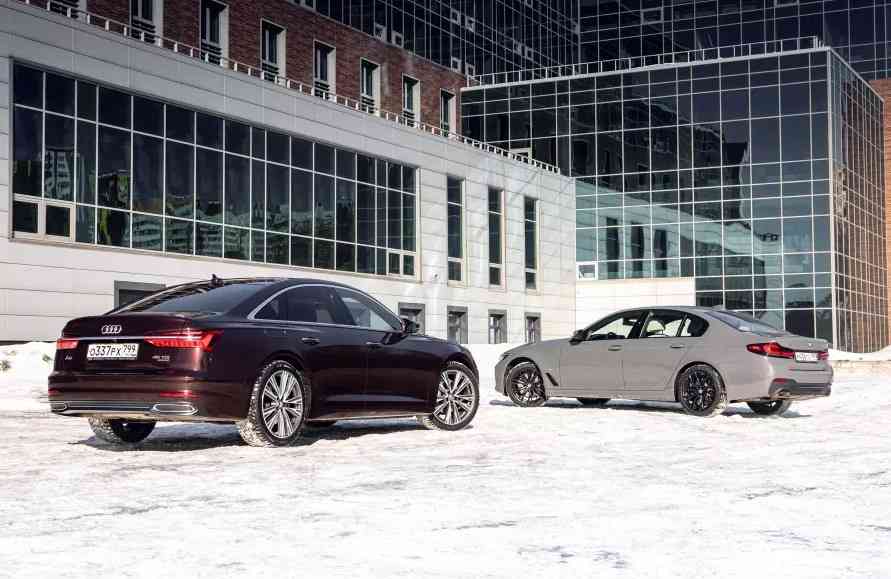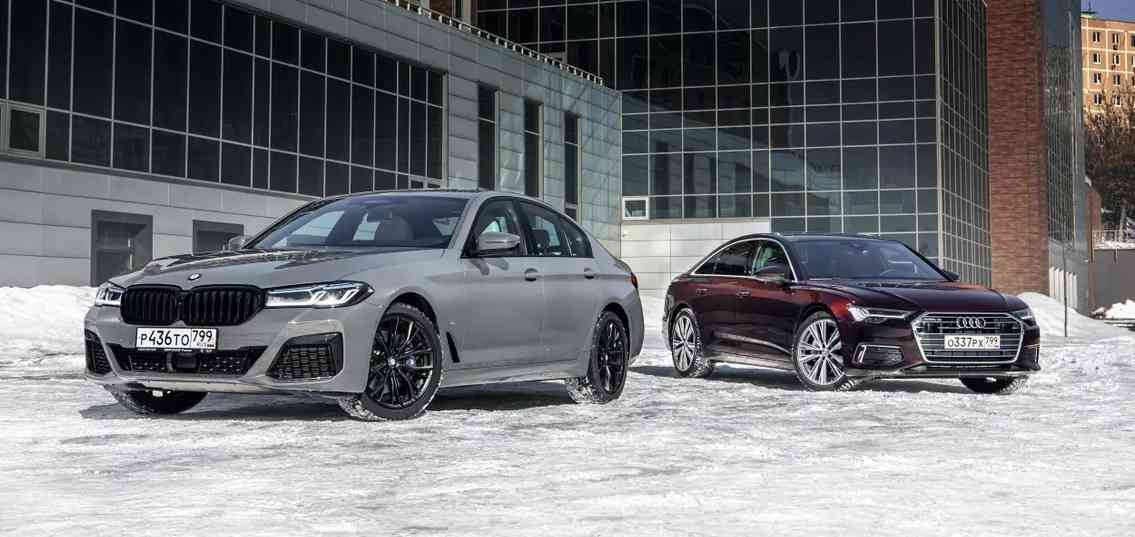The match in the configuration of the test pair is perfect: 3-liter diesels with a capacity of 249 hp, all-wheel drive, 8-speed automatic machines, rich equipment. I want to collect something like this “for myself”: this is the optimal aggregate configuration, so as not to feel flawed. For example, as on noisy and vibro-loaded junior diesels or weak initial “gasolines”. The stated dynamics figures are quite convincing for most drivers, so that they do not have to think about even more powerful 340-horsepower engines. And here opens the third, at first glance, the simplest level of the “dilemma 5 or 6”: according to the characteristics, the BMW 5 gains 100 km/h in 5.5 seconds, and the Audi A6 — in 6.1.
But how many buyers prioritize acceleration? In fact, both cars are fast enough to not worry about the dynamics in everyday driving at all. But the difference in driving sensations, unlike dry figures, can tilt the choice in one direction or another. For example, a brisk pace is more pleasant on a BMW — in this mode, the “five” feels noticeably more lively and responsive than the Audi A6. When you are fast, BMW guesses the gears better, follows the pedals more precisely, gives better feedback on all channels of communication between the car and the driver. Audi is also not averse to driving actively, but, unlike BMW, it does not give such a sense of unity of the rider and the horse.
The situation is similar with handling, but there is less difference here. The test BMW got an M-suspension, and in combination with the traditionally heavy steering wheel for the brand, this gives the effect of more sporty behavior. Audi does not try to preach driver values, but this does not prevent it from being as obedient as BMW. All these nuances hardly affect the real pace of movement on the road available to the driver.

And it all comes down to personal preferences: is it necessary to be in such close contact with the car all the time? After all, business class is not the case when a car is bought for the sake of bright sensations, balance and versatility are important here. But at the same time, it’s great that there is a choice: a sociable BMW or a detached Audi.
The smoothness of the course in this class always depends on the configuration. BMW got an M-suspension, and Audi-with adaptive shock absorbers. But both cars have other suspension options among the options (as well as wheels of different sizes), which greatly change the smoothness of each model. Therefore, with a reservation about specific performances for comfort, we can recognize parity.
Both cars have a good reserve of wiry strength and energy consumption, but in some situations the chassis is too hard. Only in different conditions: BMW shakes on smooth waves, and Audi-on sharp bumps. Taking into account the orientation of these versions to the driver, and not the rear passenger, it is quite an adequate balance — neither the “five” nor the “six” is perceived as a weak-willed sofa.

By the way, about sofas. One of the cars does not take on too much and does not try to seem like an executive sedan. Both Audi and BMW have quite trivial seats on the back sofa: there is enough legroom (the roulette showed the same values), but hardly more than in some Camry; many amenities in both models come for an additional fee; and all sorts of extra gadgets for passengers, like monitors or electric seat adjustment, are not provided. Details: Audi (here’s a surprise) has a slightly more pronounced lateral support for the back of the sofa, and BMW has a wider interior by a centimeter or two.
But in the front part of the cabin, each car sets its own mood: BMW offers smooth lines, mechanical keys and colorful graphics on the displays. Audi is an angular architecture of the front panel and door cards, ubiquitous sensors and calm interfaces in muted tones. Both salons with minimal changes have long been found on other Audi and BMW models, so nothing new can be found here. The main difference is in the atmosphere: the” five “will appeal more to connoisseurs of classics, and the” six ” – to adherents of the digital avant-garde.

Like many gadgets against their analog counterparts, Audi is inferior to BMW in terms of emotions. Yes, the A6 is more surprising at the first contact with the car, but it passes quickly. And here there is a meditative effect: the problem of moving in space is simply solved. Effectively and imperceptibly. But it’s hard for me to imagine the impulse: “I’ll go for a ride on my favorite A6 in the evening!” And I don’t deny such a thought with BMW: to beat the diesel engine, load the chassis in turns and feel nostalgic for the old times in the industry, looking at the orange-illuminated pictograms of mechanical keys.
But you will want to go on business in the morning rather on Audi: there are no displays sticking out and not full of a palette, the engine is quieter, the steering wheel is lighter. A car requires less attention to itself, so it is somewhat easier to live with it as a vehicle. But as an expensive thing, which in addition to a utilitarian purpose should also just please, BMW looks more profitable. There is more character and charisma in the” five”. At the same time, none of the models is superior to the other one so much that there are reasons to choose based on something other than the notorious ideological preferences. According to formal criteria, it is a combat draw.


